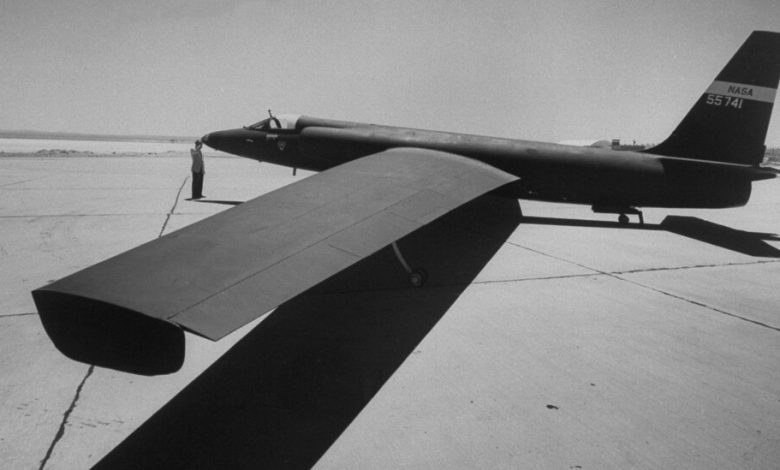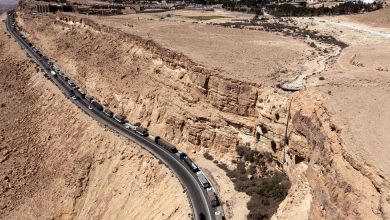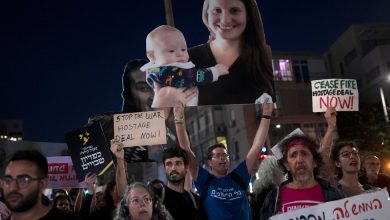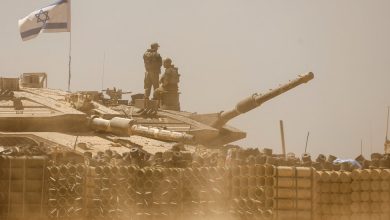A Foreign Spy Craft. Superpowers on Edge. But It Was 1960, Not 2023.

WASHINGTON — A foreign spy craft miles above the earth. A missile fired to bring it down. A flimsy cover story: just a weather plane! A high-stakes diplomatic meeting ruptured and tense superpower relations inflamed.
History, like good television, may not repeat, but sometimes it reaches back to earlier seasons for inspiration. To students of the Cold War, the saga of the Chinese balloon crossing American airspace seemed eerily reminiscent of the U-2 spy plane incident that provoked a tense confrontation between the United States and the Soviet Union.
It was one of the most fraught moments of the four-decade conflict pitting East against West, with enduring consequences. In that case, the nation spying on a rival was the United States, which regularly sent the high-altitude U-2 surveillance planes over Soviet territory confident that they were beyond the reach of Russian surface-to-air missiles — until just such missiles knocked one of its planes out of the sky on May 1, 1960.
All the Americans knew at first was that the plane had not made it to a base in Norway. Assuming that it had crashed and its pilot was killed, President Dwight D. Eisenhower’s administration put out a “cover” statement asserting that a weather plane had gone missing during a flight over Turkey.
But what the administration did not realize was that the 30-year-old pilot, Francis Gary Powers, had actually survived the crash and been captured. Nikita Khrushchev, the Soviet premier, then revealed that Powers was in their custody, exposing the American lie.
Embarrassed, Eisenhower took responsibility and suspended further flights but refused to apologize. A long-planned summit meeting in Paris with Khrushchev just days later turned into a debacle as the Soviet leader denounced the United States and stormed out. Eisenhower’s plans to visit Moscow were dashed, and a chance to ease friction and perhaps even broker an arms control treaty between the two nuclear rivals vanished. “Thanks to the U-2,” Khrushchev said, “the honeymoon was over.”
Better Understand the Relations Between China and the U.S.
The two nations are jockeying for influence on the global stage, maneuvering for advantages on land, in the economy and in cyberspace.
- Spy Balloon: The discovery of a Chinese surveillance balloon floating over the United States has illustrated the lingering mistrust and growing tensions between the two powers.
- Wooing Indonesia: China and the United States are engaged in the strategic battle for influence over the resource-laden nation of nearly 300 million people. So far, Beijing has the edge.
- The Philippines’ Role: The U.S. military is expanding its presence in the Philippines, a sign that the United States is positioning itself to constrain China’s armed forces and bolstering its ability to defend Taiwan.
- Investing in Mexico: Alarmed by shipping chaos and geopolitical fractures, exporters from China are setting up factories in Mexico to preserve their sales to the United States.
Whether the Chinese balloon episode will have a similar ending is yet to be written. But China’s insistence that it was merely a weather craft seems no more credible than the American cover story was 63 years ago. And as it was then, an important diplomatic mission has already collapsed as a result, with Secretary of State Antony J. Blinken scrubbing a trip to Beijing.
Most Americans have no firsthand memory of the U-2 incident, of course, though President Biden is an exception because he was 17 at the time. But it was brought to modern audiences in 2015 in “Bridge of Spies,” a movie starring Tom Hanks as James Donovan, the American lawyer who negotiated the spy swap that freed Powers.
The echo from the episode, though, serves as a reminder that powerful countries regularly spy on one another, which generally becomes a problem when it goes public or leads to misunderstanding or tragedy.
In 1983, a Soviet warplane shot down Korean Air Lines Flight 007 after it veered into Russian airspace at night, killing 269 passengers and crew members, including an American congressman. Moscow said the plane had been mistaken for a spy plane. In 2001, a Chinese fighter plane got too close to an American EP-3E Aries II reconnaissance plane gathering intelligence over the South China Sea, forcing it to make an emergency landing at a Chinese base.
“The United States and its allies sent espionage balloons over the Soviet Union back to the late 1940s,” said Michael Beschloss, author of “Mayday: Eisenhower, Khrushchev, and the U-2 Affair,” published in 1986. “They did this to detect any danger of an imminent Soviet surprise attack and to assess the size of the Soviet military complex so that Truman and Eisenhower could gauge how much they needed to spend on defense.”
Eisenhower, he added, “believed that such intelligence-gathering served the peace by averting an unnecessary arms race that could lead to war.” Starting in 1956, Eisenhower authorized the C.I.A. to secretly send U-2 planes over Soviet territory, gambling that their altitude of 70,000 feet would keep them undetected. At the same time, Eisenhower understood that the flights could be seen as an act of war and insisted on personally approving each one.
In fact, the flights were being detected. Khrushchev knew about them and was furious at the intrusions into Soviet airspace, but he made no public protest because he did not want to reveal his military’s inability to stop them until a more sophisticated missile was developed.
As the Paris meeting approached in 1960, Eisenhower wanted to avoid any chance of disrupting the gathering and ordered U-2 flights halted well in advance. But after bad weather postponed a mission before the meeting, Richard Bissell, the father of the C.I.A. program, persuaded the president to authorize a final flight on May 1, barely two weeks before the meeting scheduled for May 16.
“Even in the less conspiracy-minded age of 1960, some Americans wondered whether warlike figures in our Pentagon had deliberately sent the flight to destroy the summit,” Mr. Beschloss said. “Such questions will now be asked of the Chinese military.”
Questions will also be asked about the American government, especially given a report by the Pentagon that China has sent spy balloons over American territory before, under both Mr. Biden and President Donald J. Trump.
“We need to know a lot more about the real mission of the Chinese spy balloon and why the Trump administration did not down other earlier such balloons and why it may have taken extraordinary measures to keep those incursions secret from the American public,” Mr. Beschloss said.
But the latest incident may also prompt a change in spying. John McLaughlin, a former acting C.I.A. director, recalled that the downing of the U-2 meant the United States had to develop better satellites to make up for the lost intelligence. “One lesson is when you lose the capability to use a collection tool,” he said, “you start to think of more ingenious ways to get at the target. The Chinese are undoubtedly doing such an analysis.”
One main difference between 1960 and 2023 is that the Chinese craft was unmanned, sparing a drama over what to do with a pilot. The Soviets convicted Powers of spying and sentenced him to three years in prison and seven more years of hard labor before releasing him in February 1962 in the trade arranged by Donovan.
Powers was not a hero to everyone; some faulted him for not using a poisoned suicide pin to avoid being taken alive, even though he was not in fact ordered to do so as many assumed. After his return, he and his wife divorced and he quit the C.I.A. He later wrote a book and sought a congressional investigation to clear his name.
While he survived being shot down by the Soviets, he did not survive working as a weather helicopter pilot for a Los Angeles television station, dying in a chopper crash in 1977.




